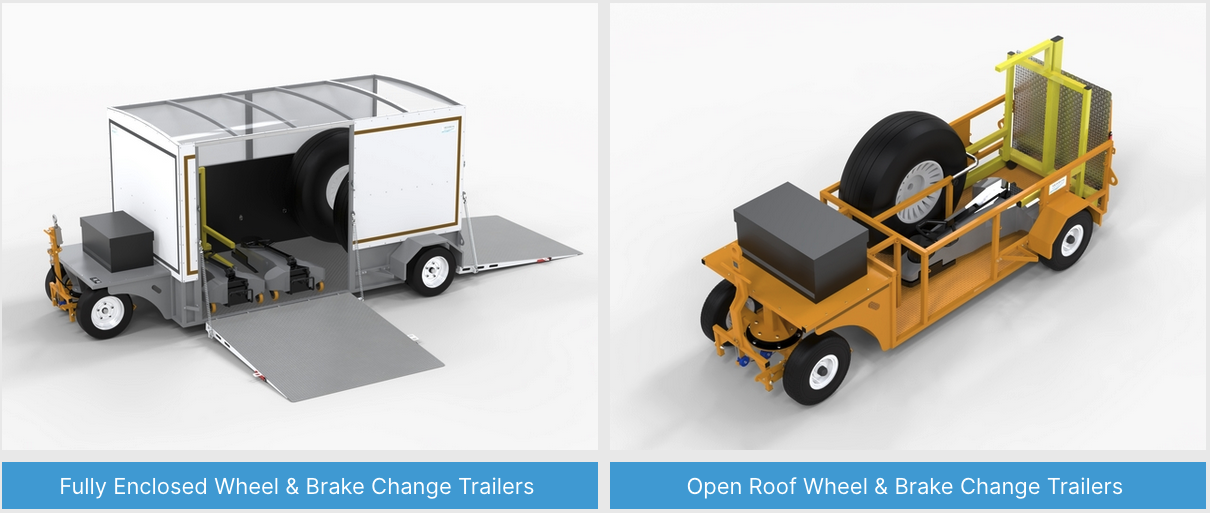Planes are, of course, moving vehicles. So just like any other moving vehicle, be it a bicycle, a car or a Mack truck, its tires need to be changed. In fact, plane tires are changed every 120 to 400 landings, because there’s so much more wear and tear put upon them (weight of the plane, extreme heat and cold, the speed of takeoff, braking from very high speeds, etc.). That being said, a plane’s tires are different from car or bicycle tires: They’re tubeless, have a pressure of approx 220 PSI, and are filled with nitrogen instead of just air (if they were filled with air, the oxygen could ignite at the high temperatures that occur when the braking system is at work).
Every time a commercial plane arrives at an airport, the maintenance team checks the tires. They’re mainly looking to see if the tires are worn out, if there’s anything stuck in the rubber, or if the rubber shows any damage.
If the tire passes inspection, it lives to see another flight ;-). But if not, the maintenance team orders another tire from the tire shop. It’s brought to the plane by way of a tire trailer, which is able to hold 2 tires, as well as the tools needed to change the tire. Here are examples from Newbow Aerospace, in the UK.
 The maintenance team will check the pressure in the new tire, and fill it with more nitrogen, if necessary, to get it up to that 220 PSI.
The maintenance team will check the pressure in the new tire, and fill it with more nitrogen, if necessary, to get it up to that 220 PSI.
The trailer includes a specialized jack that’s placed under the plane’s landing gear. That’s what’s used to help raise the old tire off the ground. Once the tire is off the ground, the nuts and other specialized pieces that are holding it in place are loosened so the tire will be able to be removed from the plane.
A lifting cart (which is also included in the trailer) is then moved under the tire to help the mechanics pull the tire off the plane (remember that each tire, in combination with its wheel rim, weighs several hundred pounds (as an example, a 747-8’s tire/rim will be about 500 pounds). Then, once the old tire is off the plane, it’s rolled to the changing trailer.
With the tire off the plane, it’s a good time to check the plane’s brakes for any sort of damage (if there’s something wrong with the brakes, they can be swapped out in a similar manner to swapping out a tire).
The new tire and rim are then put onto the lifting cart so it can be introduced to the plane (“Plane, this is your tire. Tire, plane. Say hello!”). The new tire/rim is then slid over the plane’s brake calipers and onto the axle.
Once the tire is in place, the lifting cart is removed and the mechanic puts all the hardware onto the new tire/wheel so it stays in place safely.
The jack is then carefully lowered until the tire is back on the ground.
The old one gets labeled and is sent to the tire shop. If it can be re-treaded, great! (Unlike cars, where retreading is frowned up, it’s normal practice with aircraft tires. A plane’s tires are retreaded eight to ten times before being replaced, and that’s a good thing because the cost of retreading is about a quarter of the cost of a new tire LOL!). If the tire can’t be retreaded, it will be recycled (Condé Nast Traveler reported back in 2016 that airplane tires are frequently turned into tractor, wagon, and backhoe tires, but sometimes rubber mulch for playgrounds and sports fields.).
The whole process should take less than half an hour (although people always have stories of how a tire change took much longer).
And who makes plane tires? The same tire companies we all know and love. Bridgestone. Dunlop. Goodyear. Michelin.
Here’s a video that goes into a little more detail about how the tires on a plane are changed:
Feature Photo: Public Domain/U.S. Navy (Jacksonville, Fla. (Aug. 10, 2005) Aviation Structural Mechanic 1st Class Anthony Versage, right, and Aviation Structural Mechanic 2nd Class Ramon Diaz replace a main landing gear tire on one of their squadron’s P-3C Orion aircraft. Versage and Diaz are assigned to the “Mad Foxes” of Patrol Squadron Five (VP-5). U.S. Navy photo by Photographer’s Mate 2nd Class Susan Cornell File# 050810-N-8544C-008)
Want to comment on this post? Great! Read this first to help ensure it gets approved.
Want to sponsor a post, write something for Your Mileage May Vary or put ads on our site? Click here for more info.
Like this post? Please share it! We have plenty more just like it and would love it if you decided to hang around and sign up to get emailed notifications of when we post.
Whether you’ve read our articles before or this is the first time you’re stopping by, we’re really glad you’re here and hope you come back to visit again!
This post first appeared on Your Mileage May Vary
